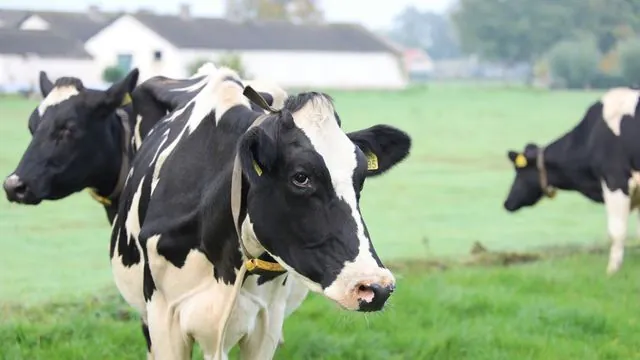
Scientists Unlock Secrets of Methane Emissions by Hacking Microbes
2025-08-15
Author: John Tan
Revolutionary Discovery in Methane Emissions Tracking
Approximately two-thirds of atmospheric methane—one of the planet's most potent greenhouse gases—emanates from microbes thriving in oxygen-deficient areas like wetlands, rice fields, landfills, and even our cows' stomachs. Despite the dire implications for global warming, pinpointing these methane sources has proved challenging.
While scientists have made significant strides in tracing carbon dioxide emissions, identifying the origins of methane requires a more intricate approach. Traditionally, researchers analyze the isotopic signatures of methane's carbon and hydrogen atoms, acting like a biological fingerprint. A groundbreaking study from UC Berkeley sheds light on a critical microbial enzyme's role in complicating these measurements.
Challenges in Understanding Methane's Origins
This discovery may transform the way researchers assess various environmental contributions to methane levels, providing a clearer understanding of its atmospheric origins. "Currently, we face large uncertainties in estimating methane sources, with potential discrepancies of up to tens of percent," explains Jonathan Gropp, a postdoctoral fellow at UC Berkeley and lead author of the study.
Innovative Use of CRISPR Technology
Gropp collaborated with molecular biologists and geochemists to harness CRISPR gene-editing technology, marking the first time such techniques have been applied to understand how methane-producing microbes, known as methanogens, generate methane relative to their food sources. "While it's widely acknowledged that methane levels are on the rise, the reasons are still contentious," states co-author Dipti Nayak, an assistant professor of molecular and cell biology.
The Isotopic Puzzle of Methane Production
Isotopes—variations of elements with different weights—offer insight into biological processes, with methane produced by various organisms exhibiting unique fingerprints. For instance, methane created by methanogens in cow intestines differs isotopically from that sourced from deep-sea microorganisms.
However, this study unearthed an unexpected twist: while dietary inputs influence isotopic signatures, environmental factors and microbial responses are equally crucial. "Microbes adapt to their surroundings by altering gene expression, which subsequently modifies the isotopic composition of the methane they produce," Gropp adds.
Implications for Future Research
Published in *Science*, the findings reveal that the traditional understanding of how methanogens produce methane may have overlooked crucial factors. By engaging with cutting-edge CRISPR technology, researchers believe they can better control and redirect methane production, potentially converting it into environmentally beneficial products.
Nayak envisions a future where manipulating these microbes could significantly reduce methane emissions. "If we can adjust enzyme levels and introduce alternative metabolic pathways, we might redirect their efforts away from harmful methane production," she concludes.
A Path Forward for Earth’s Climate
This innovative approach paves the way for merging molecular biology with isotope geochemistry to tackle pressing environmental issues. As research continues to evolve, scientists might uncover more effective strategies for controlling methane emissions and improving our understanding of Earth's climate dynamics.


 Brasil (PT)
Brasil (PT)
 Canada (EN)
Canada (EN)
 Chile (ES)
Chile (ES)
 Česko (CS)
Česko (CS)
 대한민국 (KO)
대한민국 (KO)
 España (ES)
España (ES)
 France (FR)
France (FR)
 Hong Kong (EN)
Hong Kong (EN)
 Italia (IT)
Italia (IT)
 日本 (JA)
日本 (JA)
 Magyarország (HU)
Magyarország (HU)
 Norge (NO)
Norge (NO)
 Polska (PL)
Polska (PL)
 Schweiz (DE)
Schweiz (DE)
 Singapore (EN)
Singapore (EN)
 Sverige (SV)
Sverige (SV)
 Suomi (FI)
Suomi (FI)
 Türkiye (TR)
Türkiye (TR)
 الإمارات العربية المتحدة (AR)
الإمارات العربية المتحدة (AR)